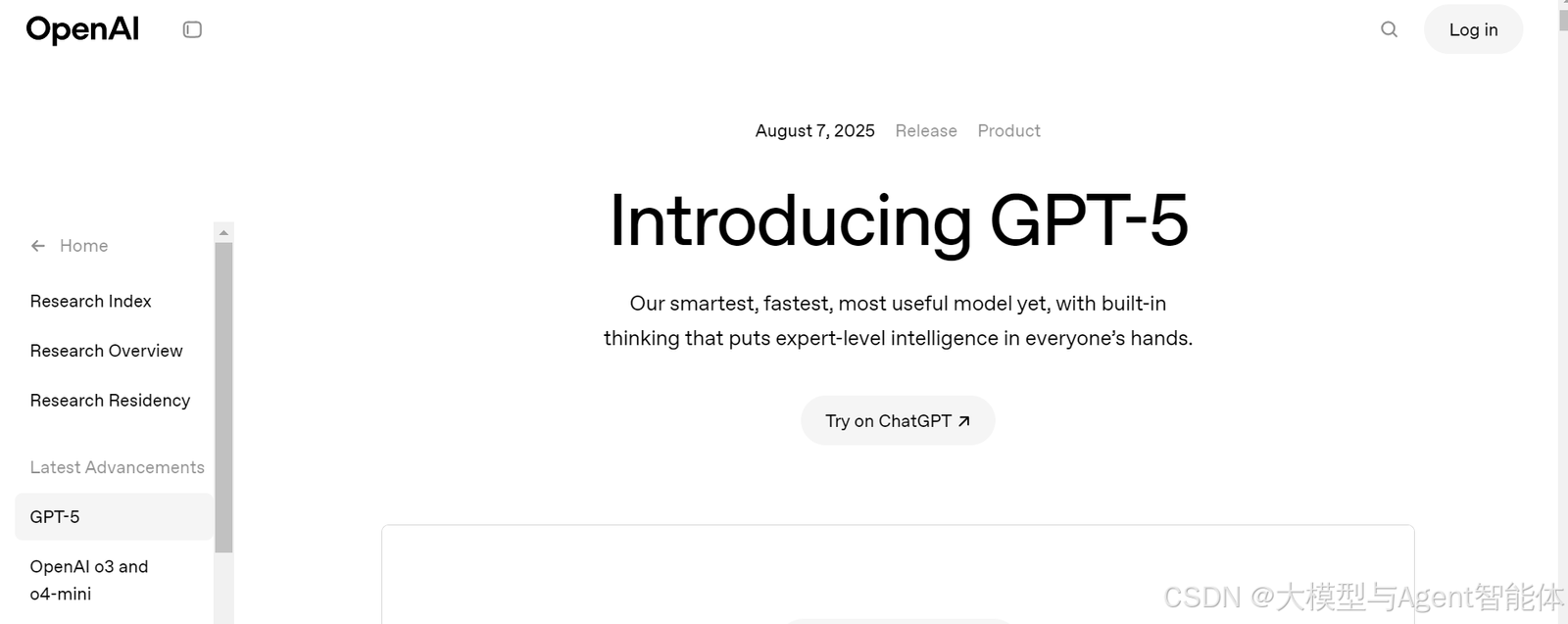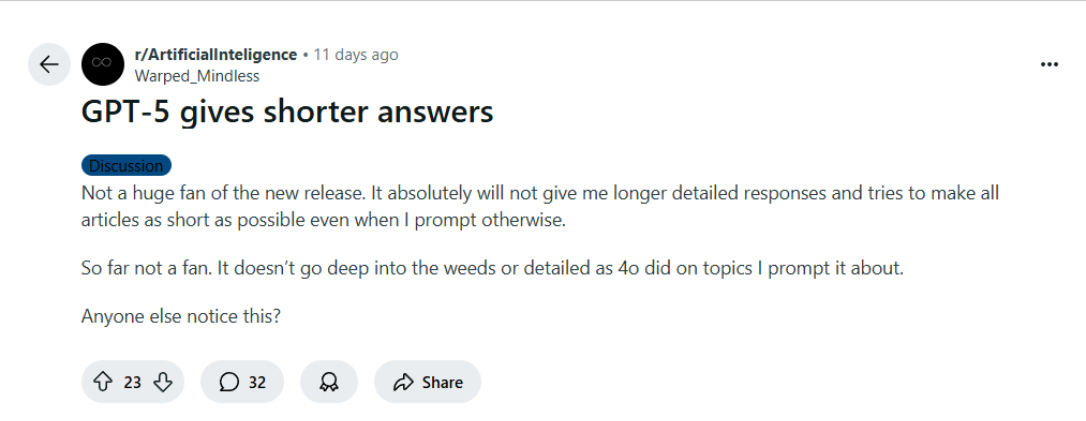
When OpenAI unveiled GPT-5 on August 7, 2025, the digital marketing world anticipated a revolutionary leap forward. The promise of a unified AI system capable of handling complex reasoning, advanced coding, and creative tasks seemed poised to transform how businesses approach content creation and customer engagement. Instead, what followed was a masterclass in expectation management gone wrong.
The user backlash has been swift and vocal, with complaints ranging from perceived downgrades in creativity to frustrating interface changes. As a leading digital marketing company in Ahmedabad serving clients globally, we’ve witnessed firsthand how AI tools can make or break marketing campaigns. This comprehensive review examines whether GPT-5 truly represents progress or if OpenAI stumbled in its execution.
Table of Contents
- The Hype vs. Reality: What Went Wrong
- User Backlash: The “Downgrade” Controversy
- What Improved in GPT-5
- OpenAI’s Response and Course Correction
- Impact on Digital Marketing and SEO
- Future of AI in Business Applications
- Conclusion
- Frequently Asked Questions
The Hype vs. Reality: What Went Wrong
OpenAI’s marketing campaign for GPT-5 set astronomical expectations. The carefully orchestrated live demonstrations showcased an AI that appeared capable of near-human reasoning while maintaining the creative flair users loved in previous versions. However, the reality users encountered post-launch painted a different picture.
Within hours of the August 7 release, social media platforms erupted with user complaints. Across Reddit and X, discussions about perceived downgrades became increasingly common, with numerous threads dedicated to user frustrations. Many users noticed significantly shorter, more corporate-sounding responses from GPT-5, even when explicitly requesting detailed explanations. The conversational warmth that made GPT-4 engaging seemed diminished.
The removal of manual model selection frustrated power users who relied on specific model behaviours for their workflows. This change particularly impacted content creators and SEO professionals who had optimised their processes around previous versions.

Reddit forum link: https://www.reddit.com/r/ArtificialInteligence/comments/1ml7bl2/gpt5_gives_shorter_answers/
One frustrated Redditor captured the sentiment: “It absolutely will not give me longer detailed responses and tries to make all articles as short as possible even when I prompt otherwise.”
User Backlash: The “Downgrade” Controversy
The core of user dissatisfaction centres around perceived quality reduction in several key areas:
Loss of Creative Personality
Users mourned the disappearance of GPT-4’s more engaging and creative responses. Many described GPT-5 as feeling “sterile” and “overly corporate,” lacking the personality that made previous interactions feel natural and productive.
Increased Restrictions
Content creators and marketers noticed GPT-5’s heightened caution with creative requests. While this conservative approach may reduce potentially harmful outputs, it inadvertently hampers legitimate creative work, particularly affecting digital marketing professionals crafting campaigns and content.
Inconsistent Performance
The new unified routing system, designed to intelligently direct queries to appropriate sub-models, often delivered unpredictable results. For instance, a complex, technical prompt that requires deep analysis might be sent to the “fast” model, resulting in a superficial and unhelpful response, creating workflow inconsistencies that frustrate professional users.
Workflow Disruption
For SEO companies in Ahmedabad and worldwide, the sudden model changes disrupted established content creation processes, forcing teams to readjust strategies mid-project.
What improved in GPT-5?
Despite widespread criticism, GPT-5 does deliver significant improvements in specific areas that justify its development:
- Advanced Reasoning and Coding: Technical benchmarks show substantial improvements in complex problem-solving, algorithm generation, and code debugging. For businesses requiring sophisticated data analysis or software development support, GPT-5 represents a genuine upgrade.
- Enhanced Multimodal Capabilities: The model’s ability to process and generate both text and images has improved dramatically. It can transform rough sketches into polished visuals and interpret complex data visualisations with greater accuracy—valuable features for digital marketing teams creating visual content.
- Improved Safety and Accuracy: OpenAI reports significantly reduced hallucination rates, particularly in health and safety-related queries. For businesses requiring reliable information for customer support or content creation, this improvement provides crucial value.
- “Thinking” Mode Innovation: The new reasoning mode allows the AI to work through complex problems step-by-step, making it particularly useful for strategic planning and analysis tasks common in digital marketing campaigns.
OpenAI’s Response and Course Correction
To OpenAI’s credit, the company quickly acknowledged user concerns and began implementing corrections. In a notable admission, leadership stated that “suddenly deprecating old models that users depended on in their workflows was a mistake.”
Key response measures include:
- Model Restoration: OpenAI announced the return of popular previous models, including GPT-4, allowing users to choose their preferred version for specific tasks.
- Increased Capacity: Sam Altman promised to dramatically increase message limits for Plus subscribers, targeting approximately 3,000 messages per week.
- Enhanced User Control: Plans to restore manual model selection and provide clearer information about which model is handling each request.
today we are significantly increasing rate limits for reasoning for chatgpt plus users, and all model-class limits will shortly be higher than they were before gpt-5.
we will also shortly make a UI change to indicate which model is working.
— Sam Altman (@sama) August 10, 2025
This response demonstrates that even leading tech companies must remain responsive to user feedback, a lesson valuable for any business, including SEO companies in Ahmedabad, managing client expectations.
Impact on Digital Marketing and SEO
For digital marketing professionals, GPT-5’s launch offers important insights into AI tool adoption and management:
- Content Strategy Implications: The inconsistent quality issues highlight the importance of maintaining diverse content creation strategies rather than relying solely on AI tools.
- Workflow Resilience: Marketing teams should build flexibility into their processes to accommodate AI tool changes and updates.
- Quality Control: Enhanced AI capabilities require corresponding improvements in human oversight and quality assurance processes.
As a digital marketing company in Ahmedabad, we’ve observed that successful AI integration requires careful planning, continuous monitoring, and backup strategies to ensure consistent client deliverables.
Future of AI in Business Applications
The GPT-5 controversy represents a learning moment for the entire AI industry. Several trends will likely shape future development:
Specialised AI Tools: Rather than pursuing one-size-fits-all solutions, the industry will likely develop more specialised AI agents optimised for specific tasks like SEO optimisation, content creation, or data analysis.
Enhanced Personalisation: AI will become increasingly important for hyper-personalised marketing campaigns, real-time optimisation, and predictive analytics that were previously impossible.
Regulatory Compliance: As AI becomes more prevalent in business operations, expect increased focus on data privacy, regulatory compliance, and ethical AI use.
Competitive Landscape: The market is expected to experience increased competition, potentially leading to more user-focused development and more responsive customer service.
today we launched ChatGPT. try talking with it here: https://t.co/uWra8LKFMN
— Sam Altman (@sama) November 30, 2022
Conclusion
The launch of GPT-5 serves as a valuable case study in technology rollout management and prioritising user experience. While the model delivers genuine technical improvements in reasoning, coding, and safety, the execution fell short of user expectations and disrupted established workflows.
As the AI usage continues to evolve rapidly, successful businesses ranging from a leading SEO company in Ahmedabad to global enterprises must balance innovation adoption with operational stability. The future belongs to organisations that can harness AI’s power while maintaining the human insight and creativity that truly drive business success.
The controversy will likely prove temporary, but the lessons about user-centric development and change management will remain relevant long after GPT-5’s reception improves.



